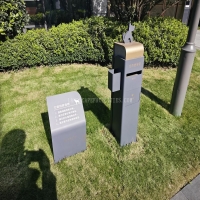Welcome to the website for landscape facilities products and knowledge.
How does the table’s surface temperature vary in direct sunlight, and are there heat-resistant options?
When outdoor tables are exposed to direct sunlight, their surface temperatures can rise dramatically, often reaching levels that make them uncomfortable or even dangerous to touch. The temperature variation depends on several key factors including material composition, color, environmental conditions, and sun exposure duration.
Dark-colored tables, particularly those made from metals like wrought iron or aluminum, can reach astonishing temperatures of 130-160°F (54-71°C) within just two hours of direct sun exposure. This occurs because dark pigments absorb more solar radiation while metals efficiently conduct and retain heat. Lighter colored surfaces typically remain 20-30°F cooler under identical conditions, reflecting more sunlight rather than absorbing it.
Material properties significantly influence thermal behavior. Traditional materials like wood and plastic demonstrate moderate heating, with temperatures typically ranging between 100-120°F (38-49°C). However, innovative heat-resistant options have emerged to address these thermal challenges. Composite materials incorporating ceramic or stone particles can reduce surface temperatures by up to 40% compared to conventional materials. Specialized cool-to-touch coatings containing infrared-reflective pigments can lower temperatures by an additional 15-25°F.
Advanced solutions include tables with integrated cooling technologies, such as micro-ventilation systems that promote air circulation beneath the surface. Phase-change materials embedded within table structures can absorb excess heat during peak sunlight hours and release it gradually as temperatures drop. For those seeking immediate solutions, removable glass tops can reduce underlying surface temperatures by creating an insulating air gap, while umbrella coverage can lower temperatures by 25-35°F.
Understanding these thermal dynamics enables smarter purchasing decisions and more effective heat management strategies for outdoor living spaces. The development of thermally advanced materials continues to expand options for maintaining comfortable outdoor surfaces regardless of sun exposure conditions.
Related search:

Recommendation
Outdoor cat and dog feces trash can; Community pet trash can; Metal multi-color design